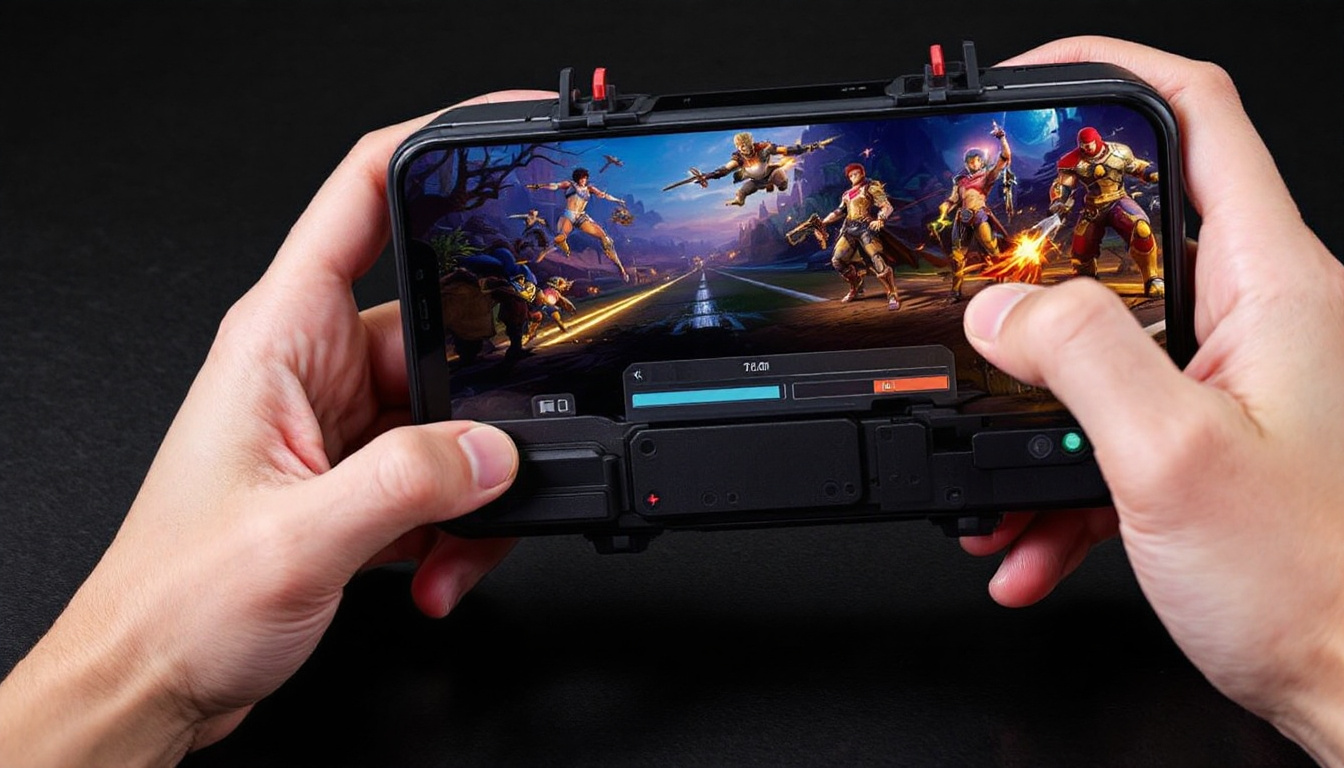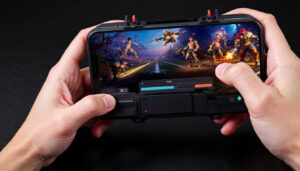Foldable phone technology has advanced quickly, bringing new hardware and screen designs to the mobile market. Sales and developer support have both grown as manufacturers refine devices and optimize their features. In parallel, mobile gaming continues to show strong performance, with more users and higher engagement than ever before. “Mobile Gaming 2025 Technology: Foldable Phones Transform Play and Profits”
The intersection of these two trends is important for IT professionals, developers, electronics specialists, and business leaders. Foldable phones offer larger, adaptive screens and novel input methods, which open up new design and business opportunities in gaming. Their features also demand new approaches to compatibility, user experience, and monetization.
This post explores how foldable phones are changing mobile gaming, from technical possibilities to shifting business strategies. For more on device support trends—including for foldable screens—see the overview of Cross-Platform Compatibility in 2025.
The Rise of Foldable Phones: A New Era in Mobile Device Design

Photo by Szabó Viktor
Foldable phones represent a significant step forward in mobile device engineering. Recent advances now allow for flexible displays, seamless hinges, and new ways to use touchscreens beyond the static slab of a traditional smartphone. The introduction of these features signals a new phase for devices, affecting not only how hardware is designed but also how people interact with technology every day. It is the result of years of work and learning, building on challenges faced by early models.
Evolution and Technology Behind Foldable Phones
Foldable phones began to make headlines in 2018 with the introduction of devices like the Royole FlexPai, soon followed by Samsung and Huawei models. Early attempts faced setbacks, such as fragile screens and complex hinge mechanisms. Today, those challenges have led to rapid improvements:
- New screen materials: Ultra-thin glass and polymer layers now protect displays while allowing them to bend.
- Hinge technology: Engineering advances permit repeated folding and unfolding without loss of stability.
- Durability and testing: Manufacturers conduct stress tests, targeting hundreds of thousands of folds over a device’s lifetime.
These advancements have unlocked new form factors, as described in the Evolution of Design in Foldable Phones. The iterative process behind these innovations reflects the persistent effort seen across technology. Many companies shaping this change are also celebrated for their contributions to broader tech progress, highlighted in profiles of the Top innovators in tech business history.
Display Innovations Fueling New Form Factors
The primary leap in foldable phones is the flexible OLED display. Unlike older screens that could shatter on impact, these displays can bend repeatedly. Key improvements include:
- Color accuracy and brightness: Matching or exceeding traditional flagship phones.
- Size and aspect ratio options: Foldables often start at a compact size, then unfold to a small tablet-like display.
- Dynamic refresh rates: Supporting smooth motion for games and productivity tools.
Flexible displays have also enabled creative device designs, such as “book-style” and “clamshell” folding. This shift opens opportunities for both single-handed phone use and large, multi-window gaming or productivity experiences.
For deeper background on the journey from early prototypes to today’s robust builds, see this overview of the rise of foldable phones.
Usability Improvements Over Traditional Smartphones
Early on, the promise of foldable phones was matched by skepticism about durability and utility. Modern foldables deliver concrete enhancements over standard smartphones:
- Expanded screen real estate without extra bulk in your pocket.
- Multi-app multitasking and advanced split-screen options.
- Improved ergonomics for reading, task management, video, or gaming.
Users now move between phone and tablet modes in seconds. For IT teams, developers, and business stakeholders, these advances set a new bar for product design and usability, aligning with evolving consumer expectations as discussed in Consumer trends in design.
Foldable technology continues to demonstrate how persistent innovation can reshape product categories and user experiences across both the consumer and professional markets.
Transforming Gameplay: The Unique Advantages of Foldable Displays for Gamers
Foldable phones have begun to influence how people experience games on mobile devices. Their flexible screens and advanced format go beyond earlier hardware—not just in design, but in day-to-day utility. This section explains how these features enhance immersion, make multitasking easier, and promote user comfort during gaming.
Enhanced Immersion and Visual Performance
The most striking feature of foldable devices is the expanded display area. Mobile games gain from this additional real estate, providing imagery that pulls in users much like a tablet—without the bulk. Games with detailed graphics, such as large open worlds or tactical maps, benefit from this clarity. Foldable screens offer rich visuals with bright colors and crisp contrast.
Key visual advantages include:
- Wider viewing angles: Foldables allow players to see more of the game, supporting genres like strategy, action, and role-playing.
- Less interruption: The absence of notches or hidden camera holes in some models leads to a seamless field of vision.
- Adaptable controls: On-screen buttons or joysticks can be repositioned, reducing finger strain and making games more accessible for all hand sizes.
Display flexibility lets developers tailor UI elements for large screens or split views, which increases satisfaction among both casual and competitive players. Insights from HONOR’s foldable phone gaming tips highlight the value of detailed maps and more responsive touch input enabled by foldable displays.
Multitasking and Gaming Productivity
Foldable phones foster a new kind of productivity for mobile gamers. With larger, multitasking-ready displays, users can engage in activities that traditional phones struggle to handle.
Many everyday scenarios become easier:
- Messaging while gaming: Chat with friends without exiting the game, reducing interruptions.
- Strategy tools: Open guides, calculators, or wikis alongside gameplay to optimize performance.
- Streaming and recording: Monitor audience feedback or manage overlays while live-streaming a game.
Foldable screens can run multiple apps in parallel, through side-by-side or floating windows, which eliminates the need to switch back and forth. According to firsthand user experiences posted on multitasking with foldable phones, the workflow improves both the enjoyment and efficiency of mobile tasks.
Developers now create interfaces that support drag-and-drop, adaptive resizing, and dynamic orientation. For businesses, this opens the possibility to design gaming-related tools that run smoothly alongside the main game, supporting a richer ecosystem.
Impact on Ergonomics and User Comfort

Photo by Tima Miroshnichenko
Foldable designs are not just visually striking—they also address user comfort. Lightweight materials and novel hinge techniques keep devices manageable for longer gaming sessions. The ability to shift between compact and expanded modes allows users to select the most comfortable format for their hands and posture.
Key ergonomic benefits include:
- Reduced hand fatigue: Larger screens use more surface area, distributing touch input and pressure more evenly.
- Flexible holding positions: Gaming on a sofa, at a table, or on the go becomes easier by folding or propping the device.
- Customizable controls: Foldables support adaptive UI layouts for accessible, comfortable control schemes.
These hardware improvements align with the latest consumer trends in device design, showing an industry push toward user-focused experiences. Developers who optimize their games for foldable displays see an improvement in user satisfaction and engagement.
Foldable phones change how people approach mobile gaming, offering ergonomic options that appeal to a wide range of users. This shift allows developers, electronics specialists, and business leaders to rethink their approach to creating engaging, comfortable, and productive game experiences.
Opportunities and Challenges for Developers and Businesses
The rise of foldable phones in mobile gaming creates both new possibilities and essential hurdles for developers and businesses. As devices introduce flexible screens and multiple display modes, creating applications and games shifts from standard practices to more dynamic, context-aware development. Business models must adapt as well, responding to changing user habits while maintaining profitability and security.
Building Games for Multi-Form Factor Devices
 Photo by Afif Ramdhasuma
Photo by Afif Ramdhasuma
Designing for foldable phones means addressing multiple form factors in a single product. Screens can shift between compact and expanded states, which changes how a game looks and behaves.
Developers encounter several technical and design considerations:
- Adaptive UI/UX: A game’s interface must reflow and adjust whether the user is on a folded phone or an expanded tablet view. This includes handling touchpoints, button size, and orientation changes smoothly.
- Performance optimization: Different screen modes may require assets at multiple resolutions or layouts for optimal performance and battery life.
- Integration with device APIs: Making full use of fold detection, hinge angle, and screen continuity APIs gives players a smoother and more immersive gaming experience.
These demands push teams to adopt new development workflows, often testing games on a variety of emulated and physical devices. Companies that address these challenges can set their games apart, offering experiences that are only possible due to foldable technology. Insights from the feature analysis of iPhone 2025 and Android flagships provide useful context on how top manufacturers are approaching foldable hardware and screen design innovations.
Monetization and Business Model Innovations
Foldable phones support new business strategies in gaming, driven by unique screen capabilities and changing user behavior. Larger, dynamic displays create opportunities for differentiated content and more engaging advertisements.
Key monetization trends include:
- Premium experience upselling: Expanded screens make it viable to offer premium game modes, enhanced visuals, or multi-window features as part of a paid upgrade.
- Contextual advertising: Businesses can introduce ad formats that take advantage of split-screen or floating windows, ensuring that ads remain visible without interrupting gameplay.
- Exclusive in-game items: Foldable-optimized titles can tie unique downloadable content to the use of particular device features, helping to increase engagement and spending.
Companies need to rethink pricing models to match the added value foldables deliver. Strategies such as bundling additional features, offering multi-device licenses, or developing subscription services aligned with foldable capabilities can give businesses a competitive edge in the market. Data-driven leaders are reviewing adoption rates and player engagement carefully to determine which new models to prioritize.
Security Considerations in Foldable Gaming Devices
Security concerns for foldable gaming devices differ from conventional smartphones due to new hardware and software layers. Multiple display states create fresh challenges in interface security and data protection, requiring stricter protocols.
Important security factors include:
- Session continuity: Maintaining secure sessions as the device transitions between folded and unfolded modes, preventing information leakage during display changes.
- API-level safeguards: Third-party game engines and app frameworks should protect access to sensors and hinge status, preventing potential misuse by malicious actors.
- User privacy: Foldables often increase multi-window use, so privacy features must cover shared screen areas and prevent sensitive data from leaking between applications.
Developers and business leaders need to assess the risk of new user flows and invest in updates throughout a device’s lifecycle. Regular security reviews help safeguard financial transactions, user profiles, and in-game assets. Industry best practices, such as secure data storage and strong authentication, continue to play a crucial role in addressing these challenges, keeping user trust intact as foldable adoption rises.
For further technical analysis of mobile security topics, see current resources on Android security updates, which detail the latest protections integrated into modern devices.
The Role of Supporting Technologies: Power, Connectivity, and Beyond
Foldable phones introduce greater complexity into mobile gaming. These advances demand much more from supporting technologies like batteries and wireless networks. Battery innovation, high-capacity and fast-charging power cells, and advanced connectivity protocols drive the reliability and enjoyment of gaming on foldable devices.
Battery Demands of High-Performance Gaming and Foldable Displays
The power requirements of foldable phones are significant. Larger displays, higher brightness, and dynamic refresh rates increase energy draw. Extended gaming sessions test the limits of conventional battery capacity. New materials and battery management systems are now in focus, with manufacturers seeking to prolong uptime without increasing device weight or size.
Foldable designs bring unique challenges. The expanded surface area and multitasking features place extra strain on each cell. Both hardware engineers and developers must optimize power efficiency while balancing performance. Progress in lithium-ion chemistry keeps these devices competitive, supporting both quick charging and steady discharge for demanding gaming workloads.
For a foundational understanding of why lithium-ion batteries dominate this space, see the article on How lithium-ion batteries work. These cells are integral for supporting day-long play and high frame rates as mobile gaming becomes increasingly resource-intensive.
Recent industry trends also point to sustainability. Eco-friendly practices have begun to influence device design—for example, using recyclable battery material and focusing on lower energy consumption over time. This focus is not just technical but also driven by regulations and consumer demand, as highlighted by the emerging shift towards sustainability in eco-friendly mobile gaming trends for 2025.
5G, Wi-Fi 6, and Next-Gen Wireless Advantages
 Photo by Kaboompics.com
Photo by Kaboompics.com
Fast wireless standards such as 5G and Wi-Fi 6 have transformed mobile gaming. Foldable phones take full advantage of these protocols, supporting seamless online play, high-definition cloud streaming, and rapid data downloads. Players expect minimal latency and instant connections, even in crowded or mobile environments.
The key benefits of advanced connectivity include:
- Reduced lag: Essential for competitive multiplayer games and cloud-based gaming streams.
- Consistent high bandwidth: Supports downloads and updates without interrupting play.
- Wider coverage: Expands the areas where gaming can happen, from urban to rural locations.
Next-generation wireless is not limited to speed. New protocols improve reliability and security—protecting game data and maintaining fair play. Device makers now prioritize antennas, radio modules, and software integration to maximize real-world benefits. Insights into frequency management and the impact of satellite communications can be found in the recent summary, What’s New in Wireless – May 2025.
Emerging standards are shaping the direction of technology. The article on emerging wireless standards and their impact in 2025 examines technical shifts and their industry effects, showing how wireless advances underpin the game experience on foldables.
Future Integrations: AI, Cloud Gaming, and Edge Computing
The next evolution in foldable mobile gaming will come from AI, cloud gaming, and edge computing. These technologies work together to remove traditional hardware constraints and improve player experiences.
Key developments include:
- AI optimization: Software adjusts graphics, power usage, and connectivity in real time to adapt to the user’s preferred settings.
- Cloud gaming services: Heavy game processing takes place in remote data centers. Foldables become interactive screens, supporting console-quality titles without overheating or draining batteries quickly.
- Edge computing: Game data and processing power are distributed closer to the player, speeding up response times and reducing the risk of lag.
These integrations allow for thinner, lighter foldable designs because less local hardware is needed. Businesses can reach larger audiences, even in regions with less powerful devices, by shifting processing off-device. Developers gain the freedom to push visual fidelity or game complexity without concern for hardware bottlenecks at the user’s end.
This union of battery advances, wireless innovation, and intelligent computing forms the backbone of the latest trend in mobile gaming. Foldable phones are uniquely suited to capitalize on these changes, setting new expectations for performance and reliability in mobile entertainment.
Conclusion
Foldable phones have set a new standard for mobile gaming. Their flexible displays, strong multitasking features, and ergonomic improvements have prompted developers and businesses to rethink how mobile experiences are built and delivered. These advances encourage new forms of engagement, more adaptable game design, and evolving business models.
The shift brings significant challenges, from technical development to security requirements. Companies that invest in adaptable design and stay alert to security best practices are positioned to lead in this fast-changing market. Developers can further enhance value by focusing on Customization and User Experience in Digital Products, ensuring that games and apps feel intuitive on every device.
As technology progresses, foldable phones will likely continue to influence mobile gaming and the broader tech sector. The next wave may see even more personalized experiences, efficient power use, and deeper integration with new wireless and AI tools. Thank you for reading. For those shaping the future of gaming, sharing your perspectives will help refine the direction of this technology.







